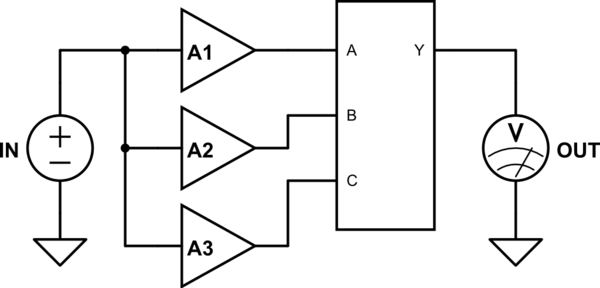This is very similar to how common mode chokes work but can we implement this by using transistors?
Lets assume we have a signal 's' we are trying to amplify.We feed this signal into some linear amplifiers a1, a2 ,a3 . These amplifiers are practical and not ideal and hence add noise to their output signal. Although these are practical conditions but lets assume for the sake of this concept that there is no phase shift in the output signal and hence the output signals say s1, s2, and s3 are all in same phase.
Now the idea is to filter the noise from s1, s2, s3 by passing these through some common mode amplifier. The common mode amplifier will only amplify the portions of the signal found in all three s1, s2 and s3 and will reject any signal found only in one of these i.e. the noise. The noise generated will be unique for each amplifier and hence this will get rejected. What kind of filter is this?


